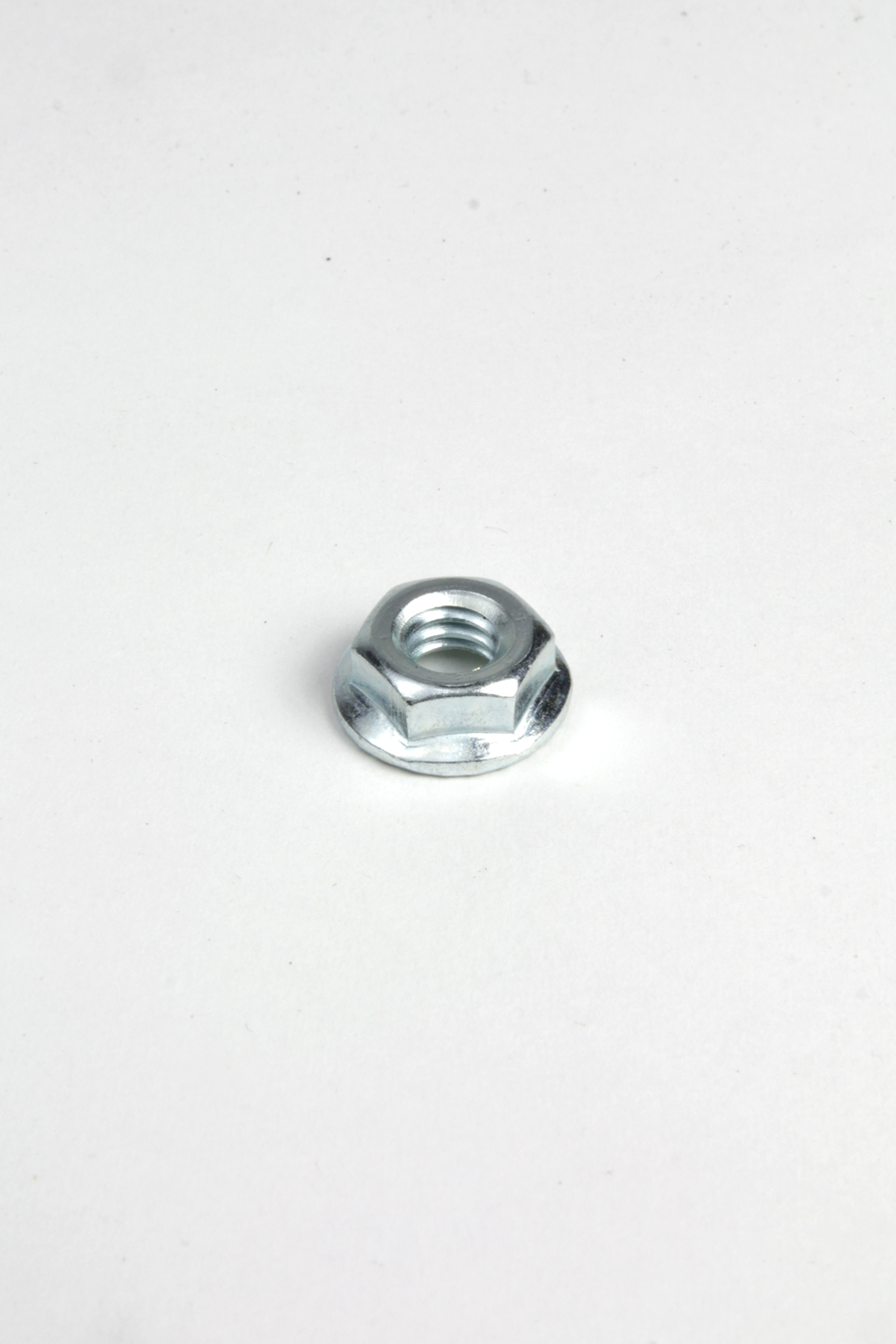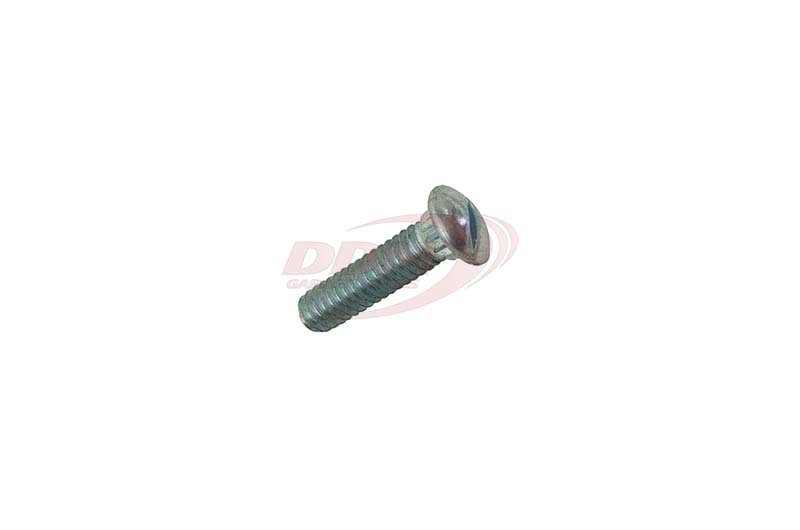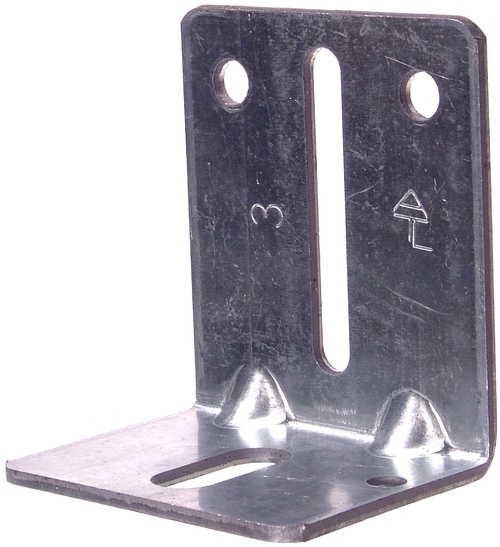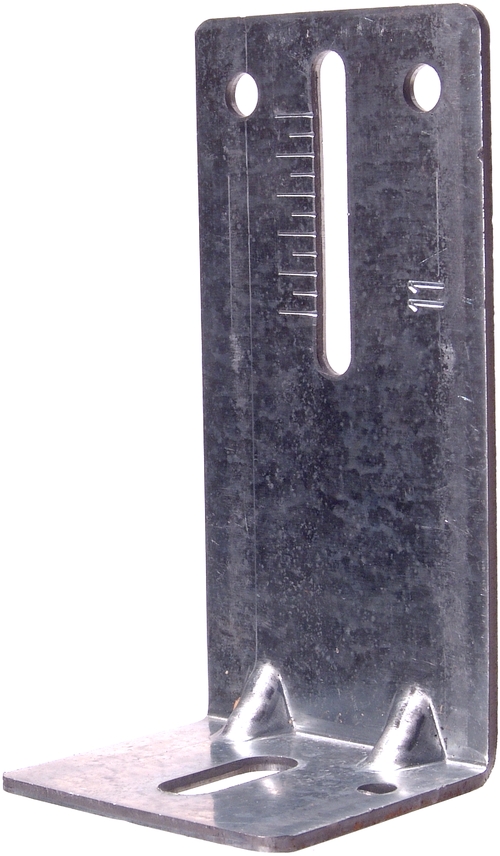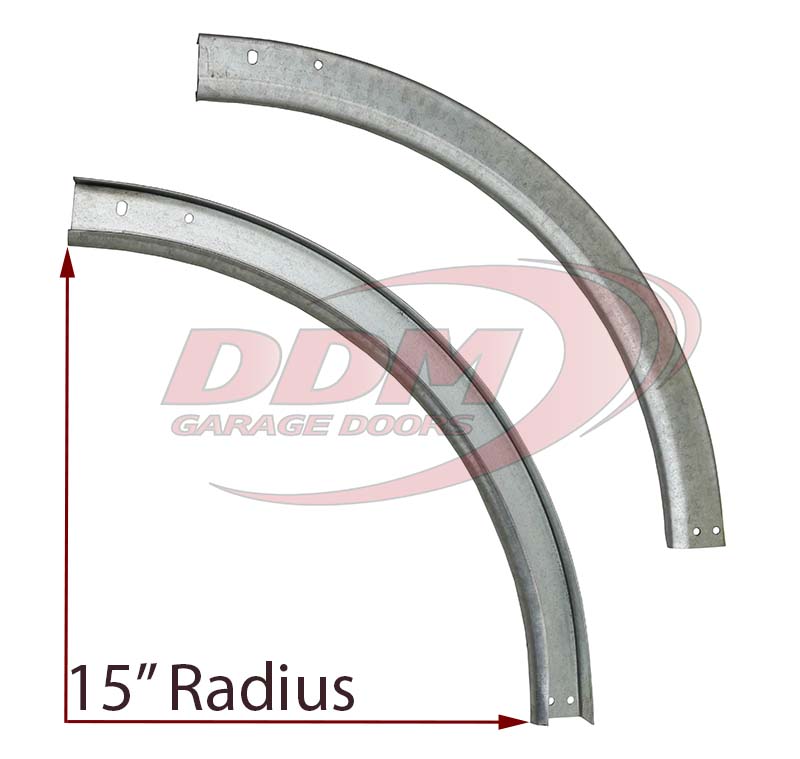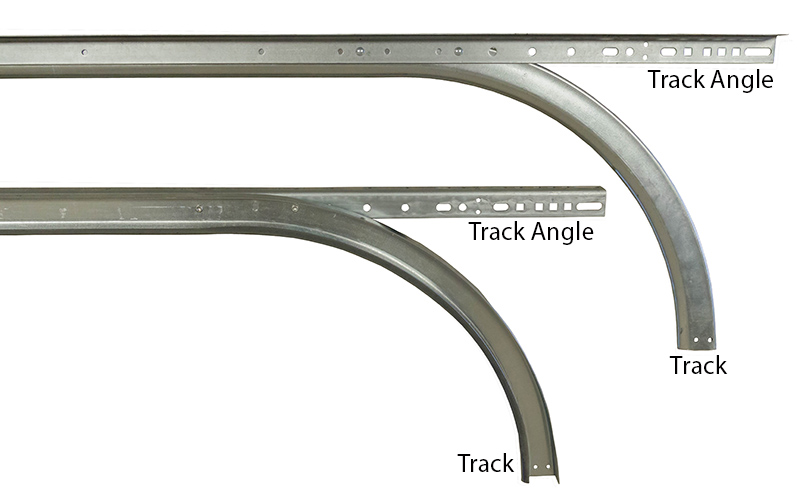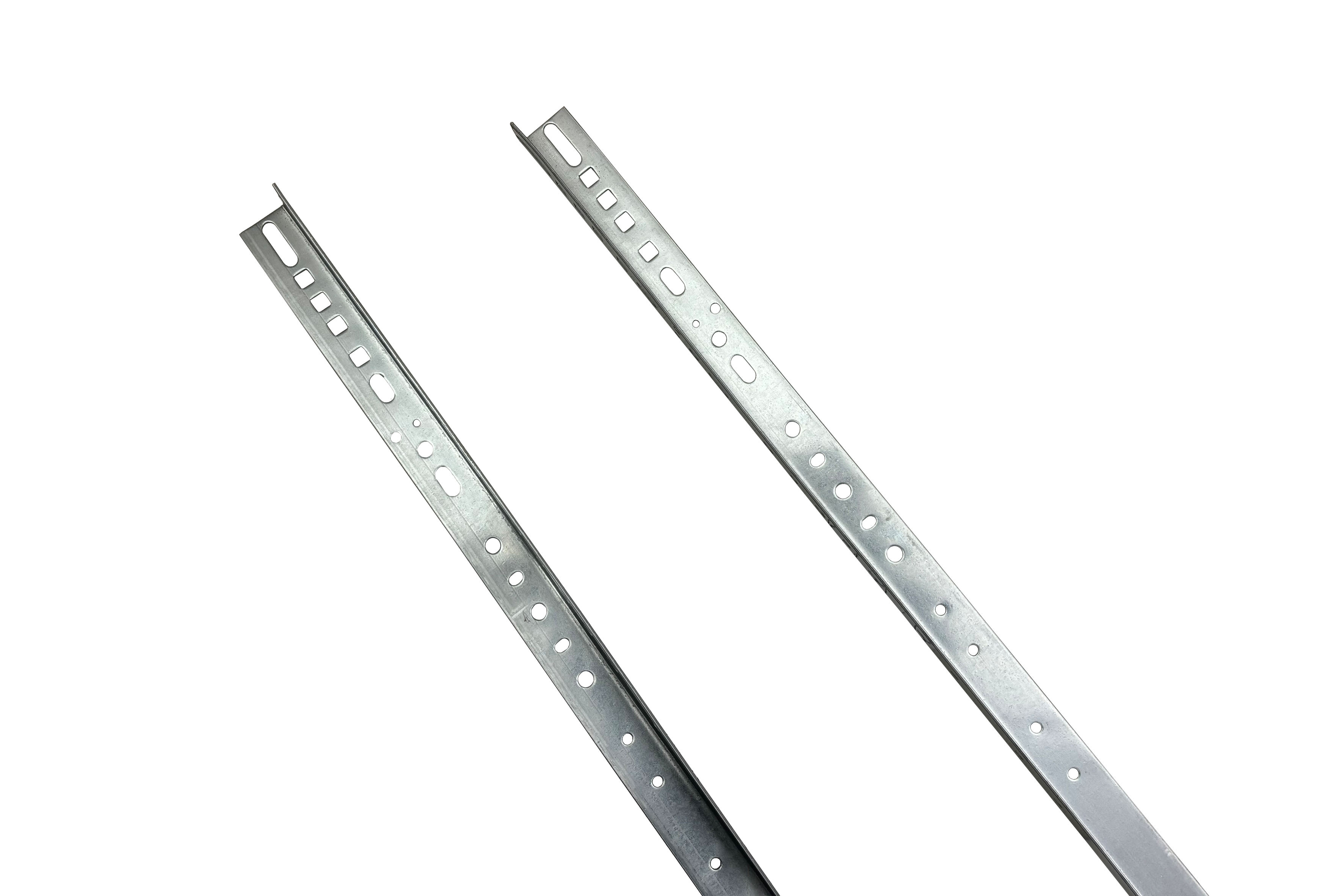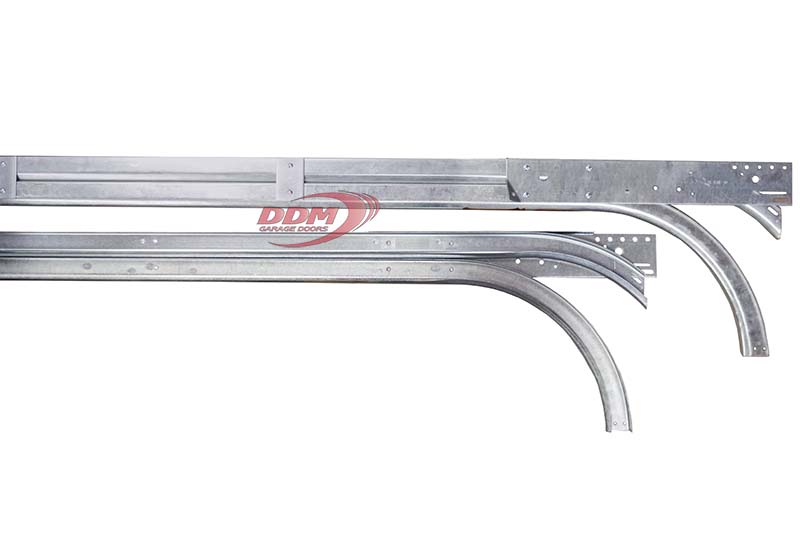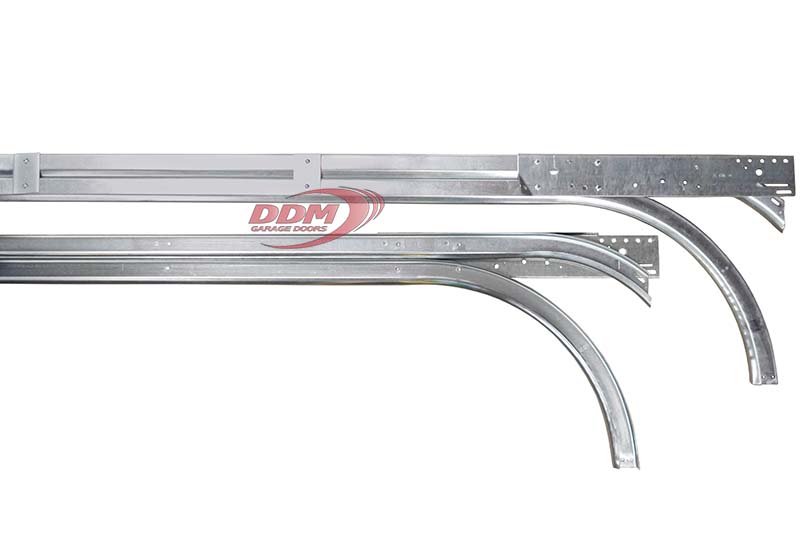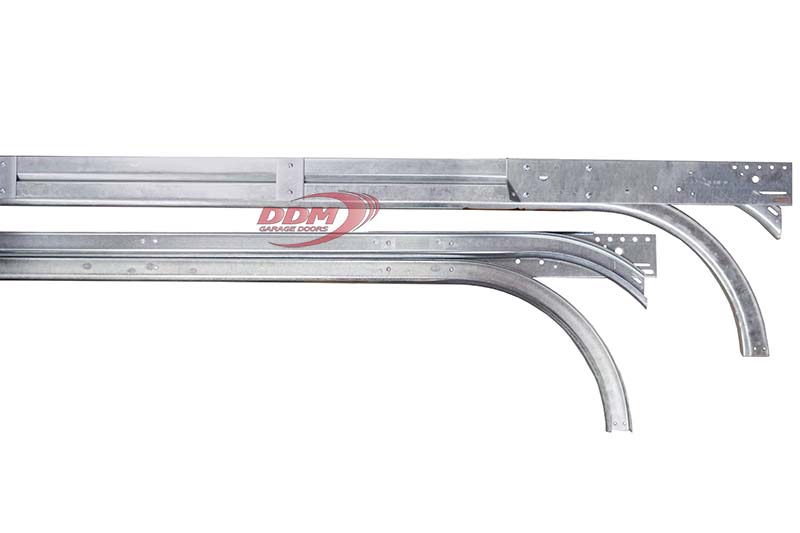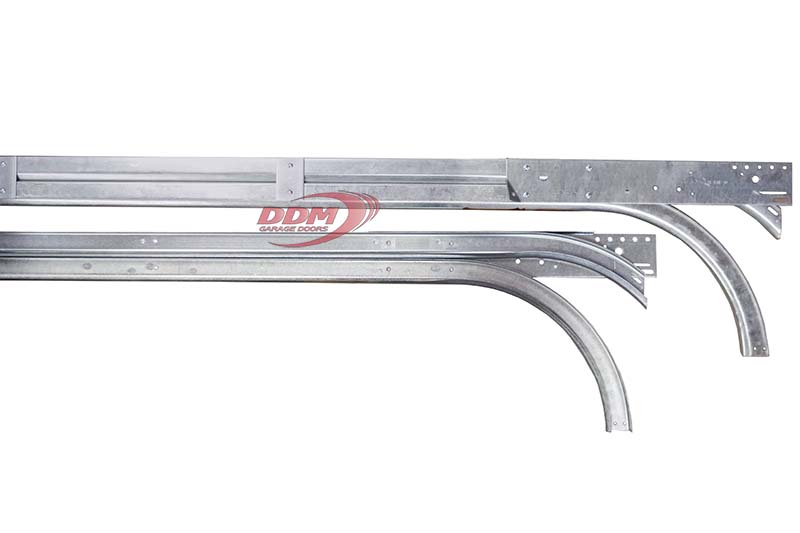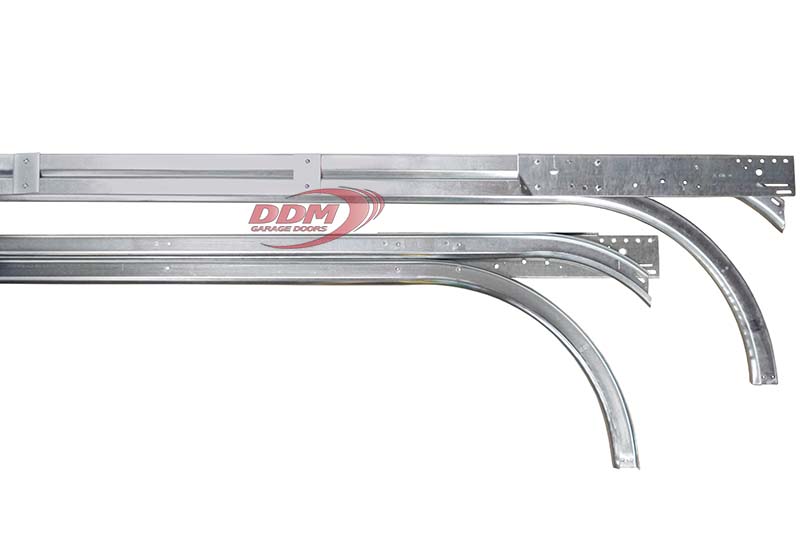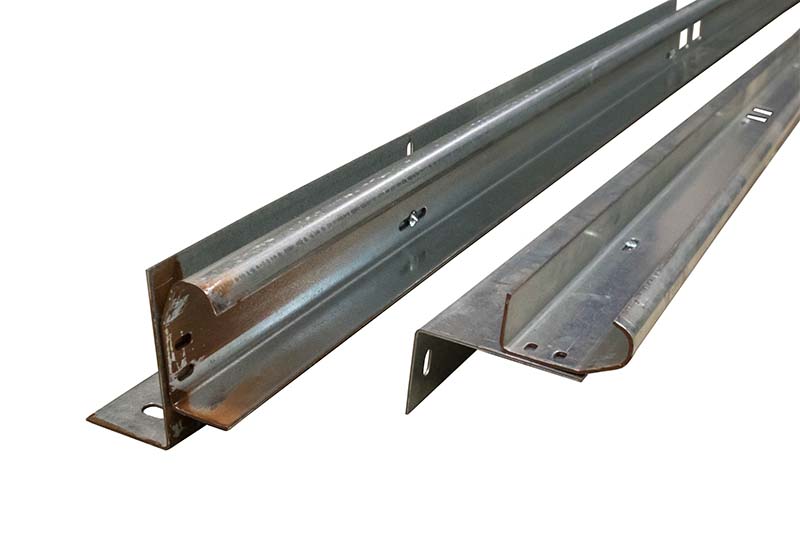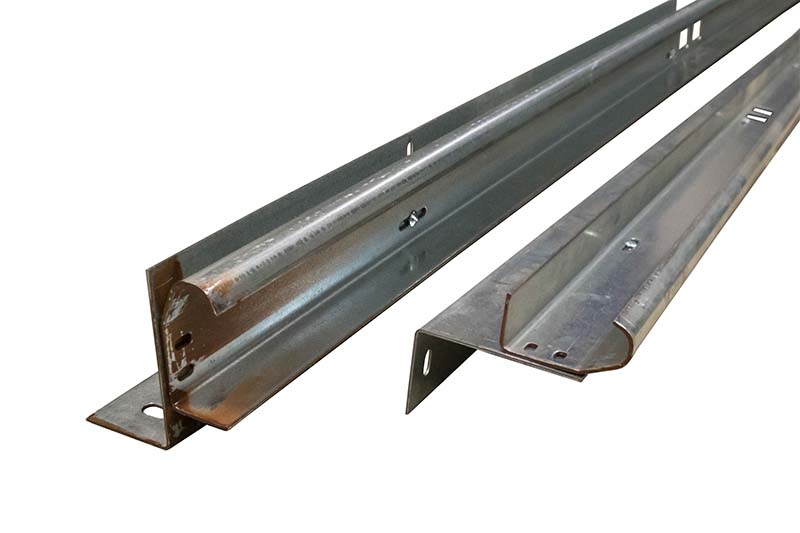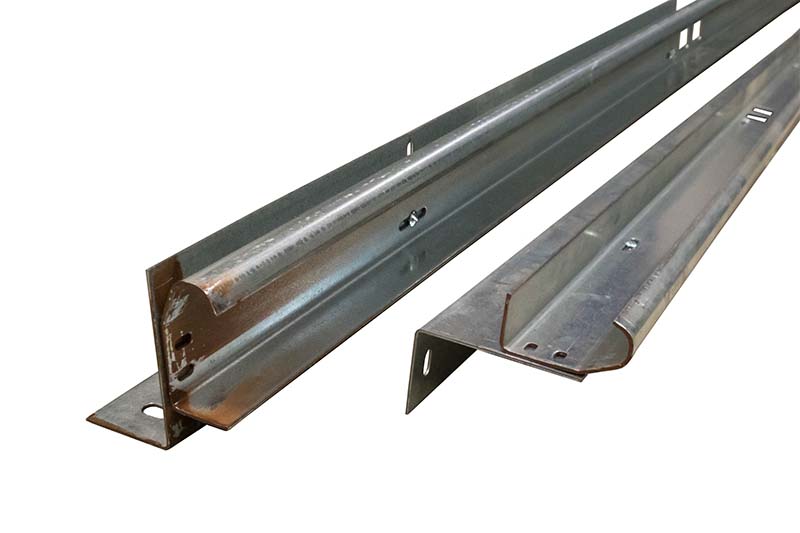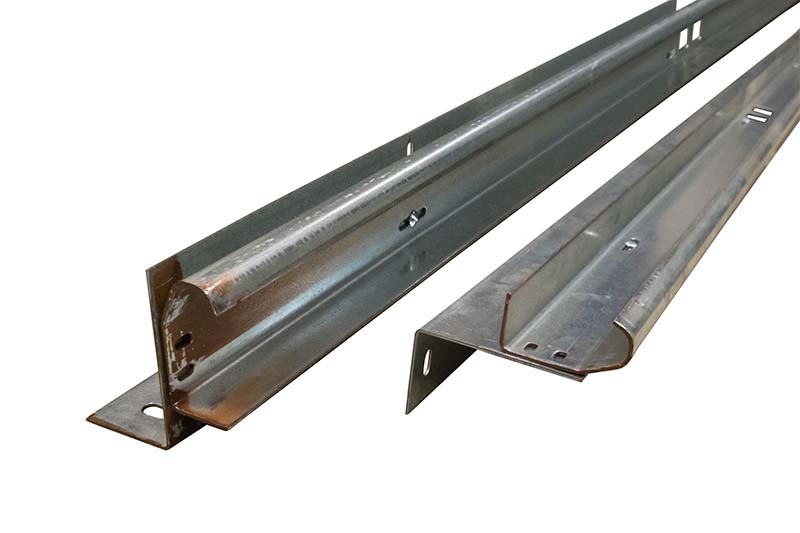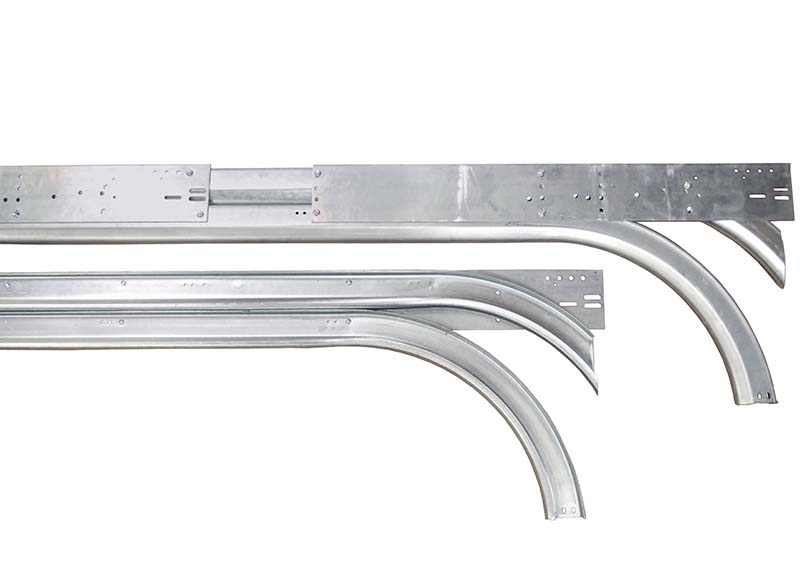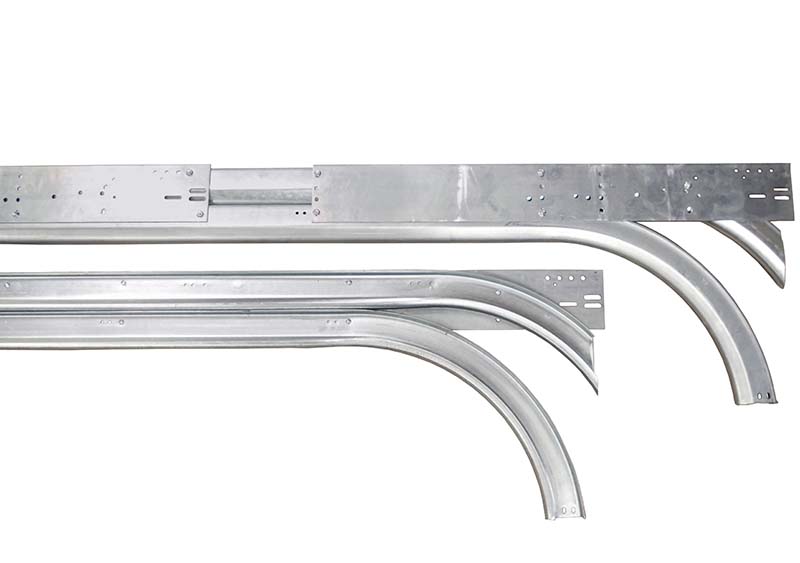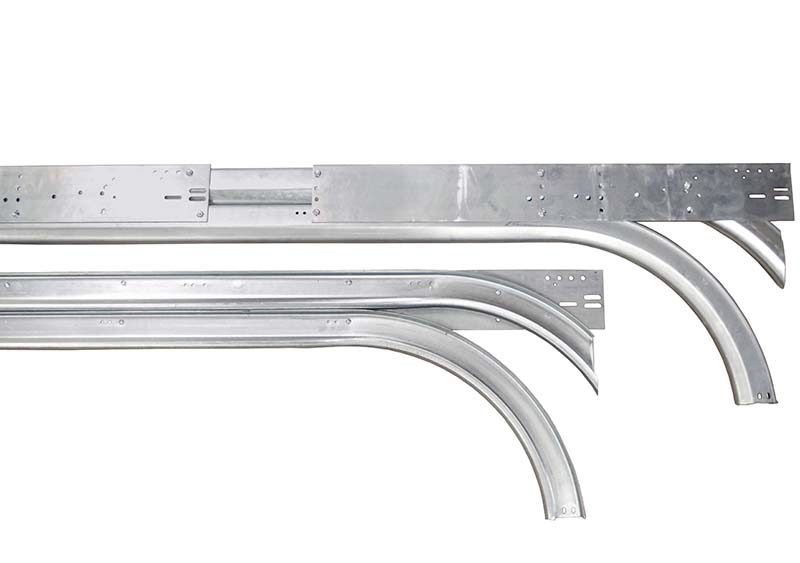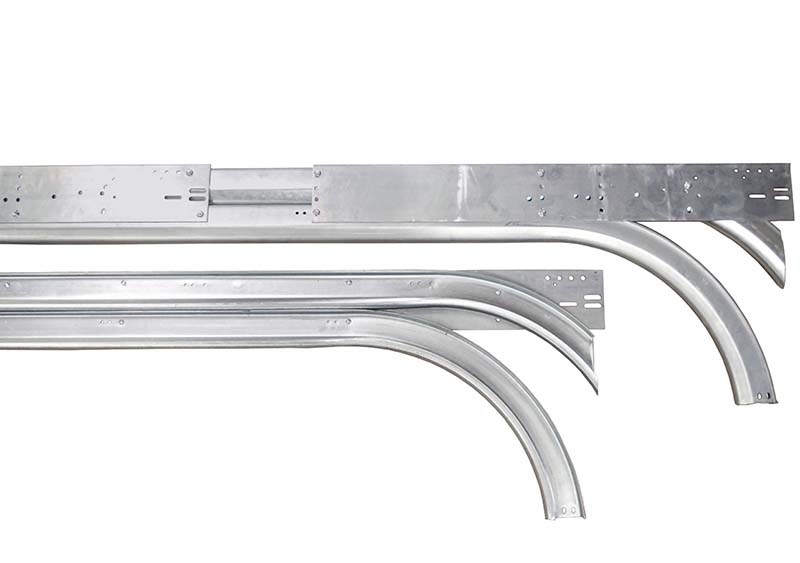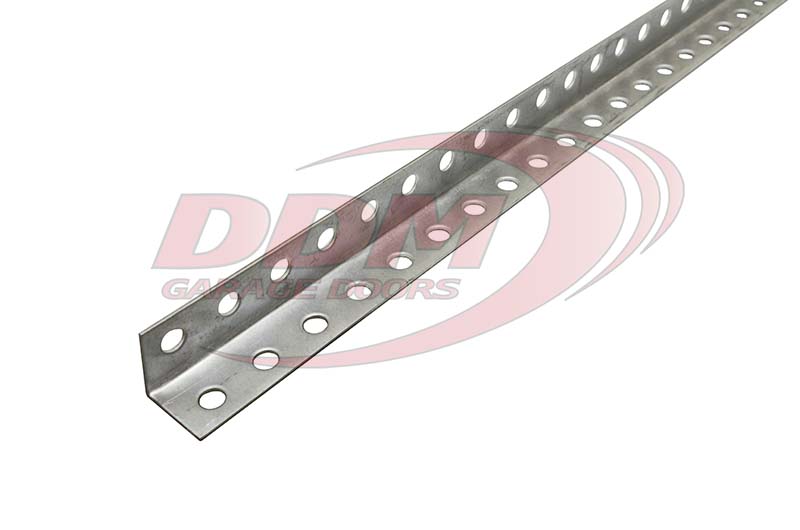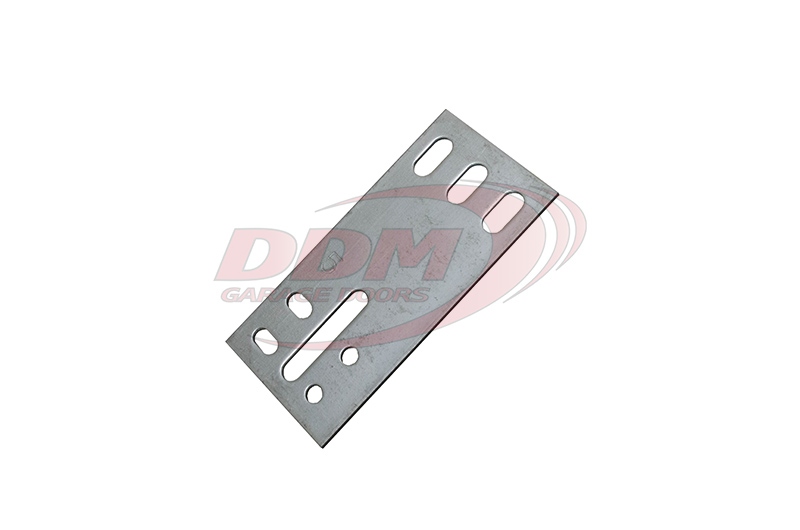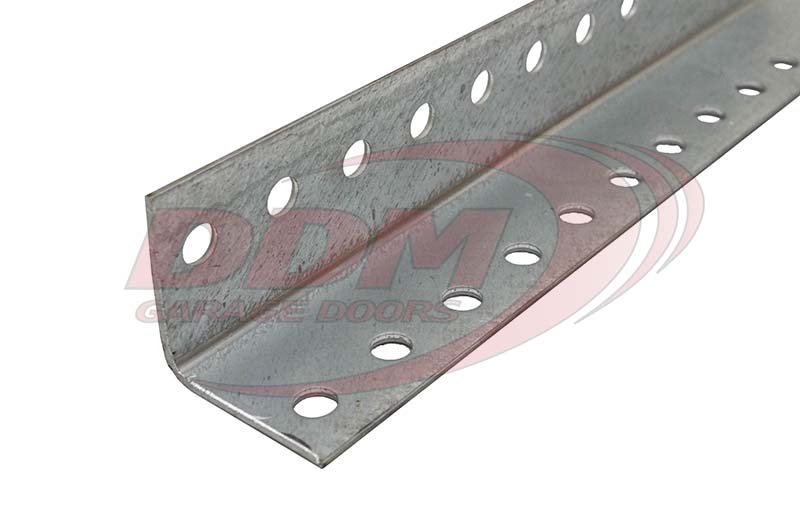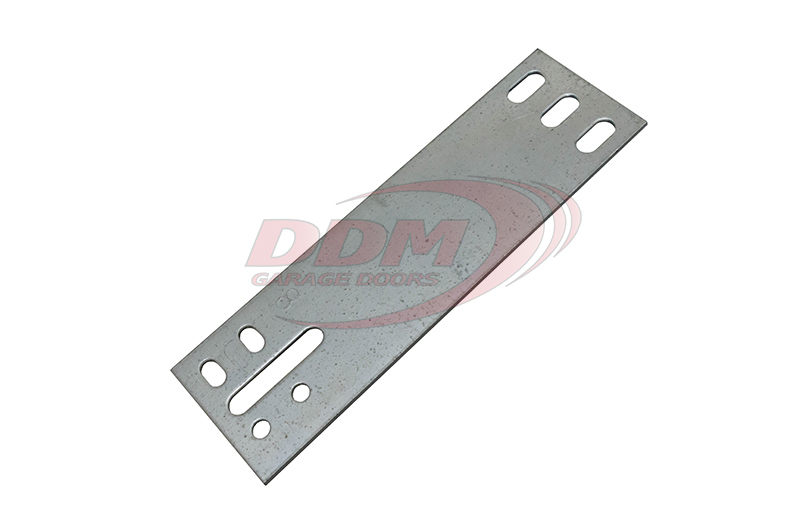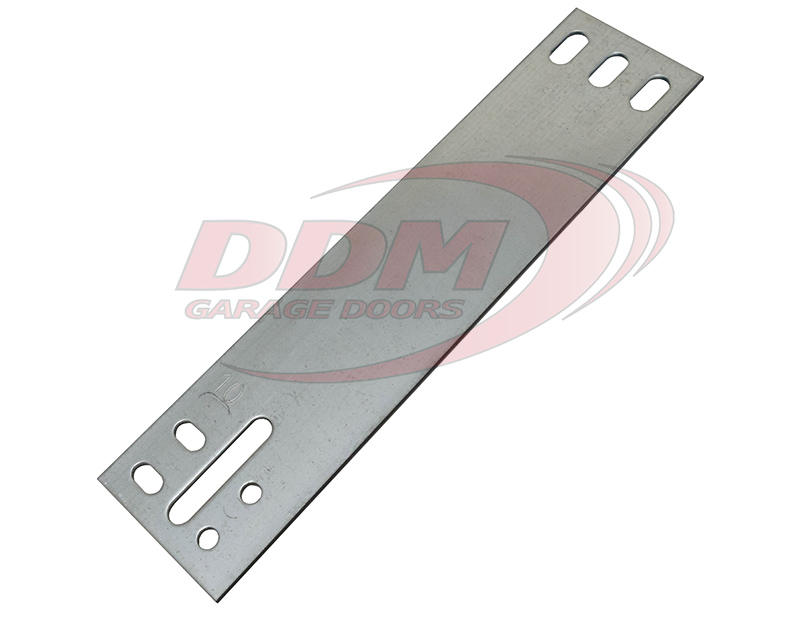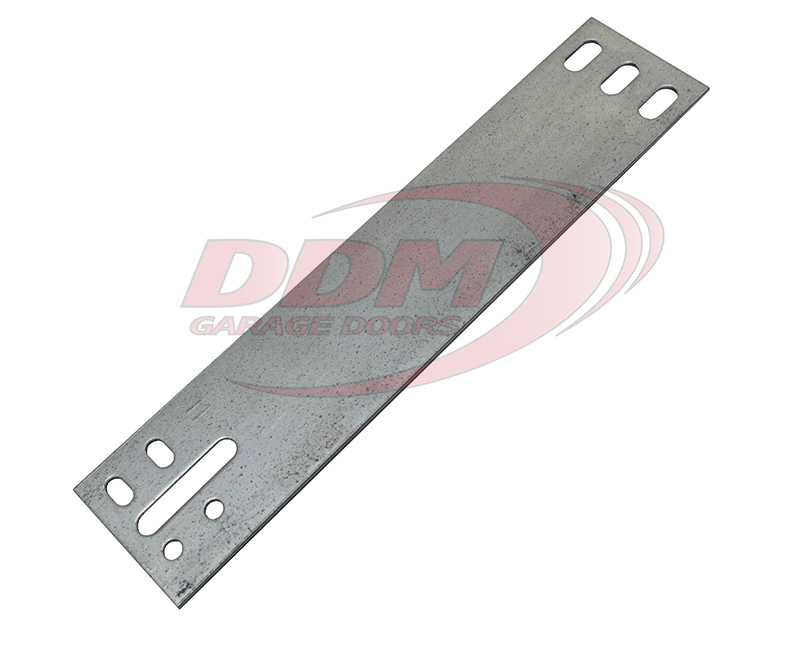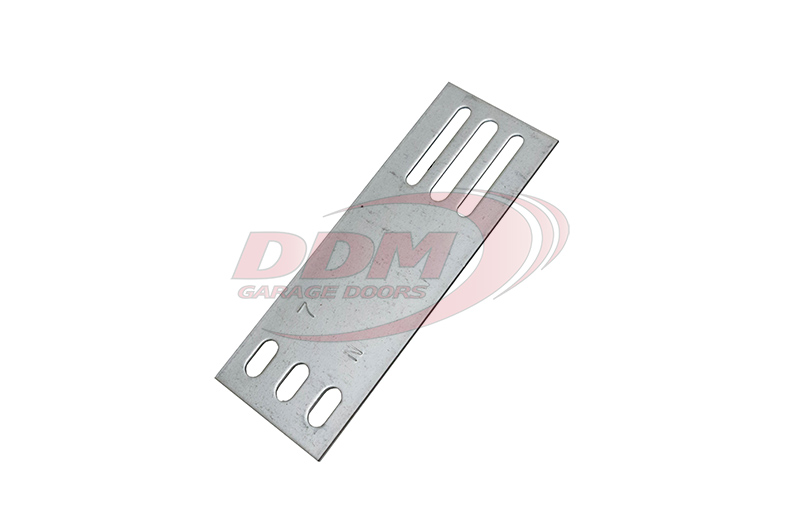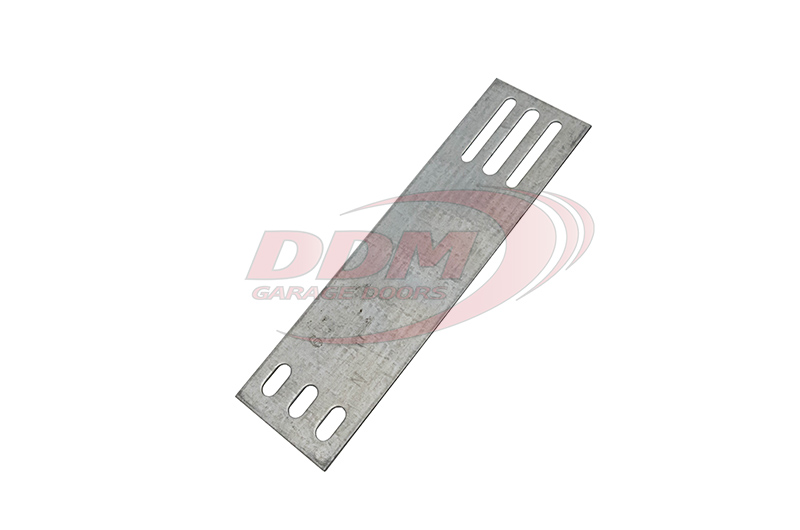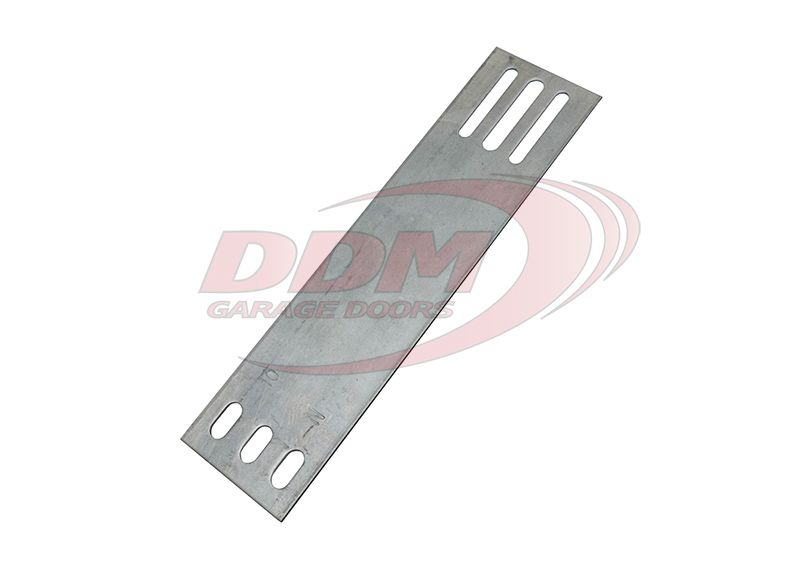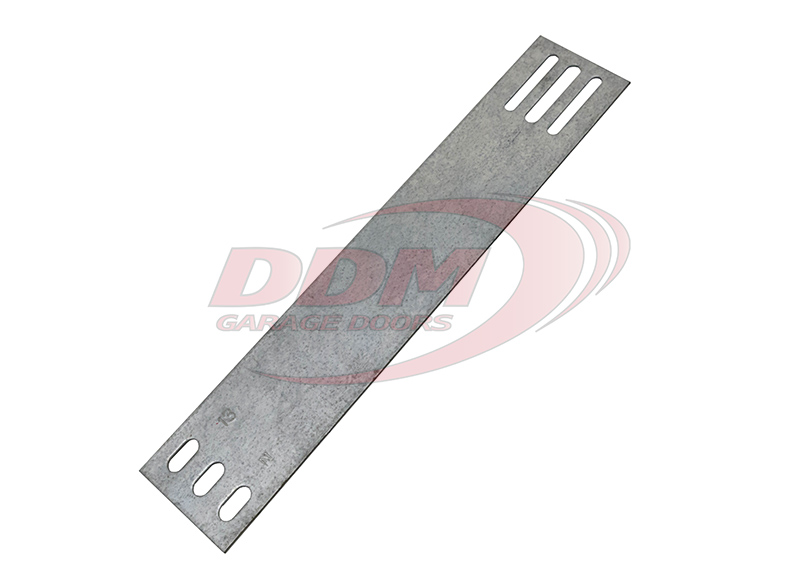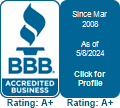Garage Door Tracks & Track Hardware
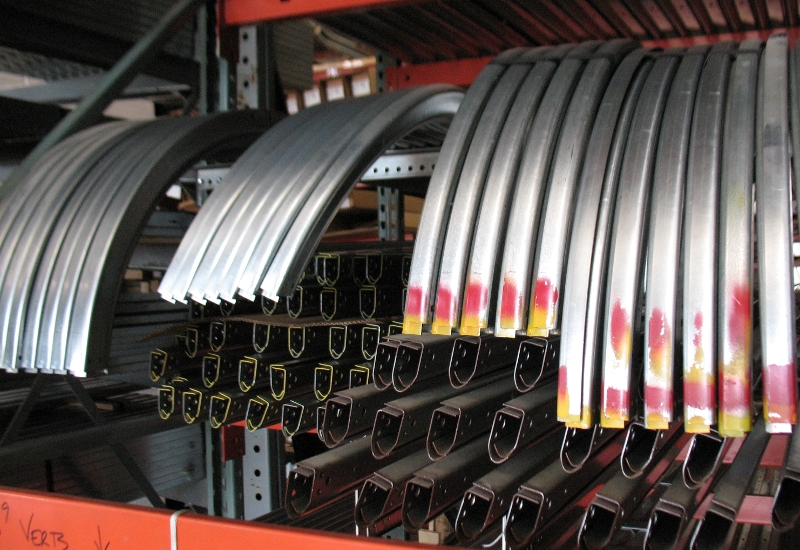
Garage door tracks house and guide the rollers, which facilitate smooth travel of the garage door. The following topics will help you understand more about garage door tracks.
- Garage door track sizes and general characteristics
- Garage door track lift types
- Garage door track repair and replacement
- Garage door track support and mounting
- Garage door track prices
Track sizes and characteristics
Garage door tracks come galvanized for protection against rust and corrosion. Earlier tracks had raw steel simply covered with black paint. Vertical track lengths range most commonly from six feet four inches up through 14 feet and four inches, and mostly in 12 inch graduations.
Garage door tracks can be purchased in three widths, one, two and three inch. One-inch tracks find most common use in truck and semi-trailer door applications. Two-inch tracks comprise most residential and commercial applications. Three-inch tracks support and guide heavier residential and industrial garage doors.
Residential tracks commonly measure 0.055, .062 and .075 inch in thickness. Over the years, tracks have seen a reduction in thickness, for the many lighter steel doors in use. The standard thickness for heavy wood doors was 0.075 inch. Prior to that the track standard came in at 0.083 inch. Three inch tracks are normally constructed with .109 inch steel.
Most garage door tracks roll off the assembly lines of either Napoleon or Arrow Tru-line. Previously, all door manufacturers made their own tracks; now only a few do, including Raynor, Wayne Dalton and Overhead Door.
Garage Door Track Lift Types
Manufacturers produce three basic types of garage door track lift: Standard lift, Vertical lift, and High lift.
Standard lift tracks handle the lift for most residential applications. A standard lift consists of a vertical track, rising to about eight inches short of the door height - six feet four inches in most residential locations and a curved section turning back to the remainder of the horizontal track. Together, these allow the door sections to rise and move to a horizontal position above the garage floor.
Vertical lift systems, seen in many commercial and industrial applications, consist of a track which rises vertically as with the standard lift, but include an additional vertical track pitched increasingly away from the interior wall, sometimes to a distance of 12-18’’. This extra space allows for the spring assembly. High lift brackets span the widening distance, at points on the extension.
High lift systems combine the features of standard lift and vertical lift. These feature a vertical track, a horizontal track that is shorter than in a standard lift system, and a high lift extension varying in length depending on application and user needs. Practically, based on a residential garage ceiling measuring about 12’ high, this extension can measure up to four feet (above standard height of seven, five minus one to allow for the top section passage to horizontal track). Residential applications may either start with a high lift system, or a high lift conversion kit can be used to convert the garage door to high lift. These kits have seen increasing use recently.
In commercial applications, the extension portion of track may rise as tall as the door itself, curving to horizontal only near the ceiling. This may present a considerable alternative to a vertical lift in low-space situations.
Garage Door Track Repair and Replacement
Garage door track repair or replacement becomes necessary most commonly because of malfunction on another door part. The list leads off with this type, and proceeds from there:
- Broken cable and/or cable drum connection. When this happens, and one attempts to close the door, the door will bend sideways and bend the track.
- Roller displacement may crop up as a clue pointing to tracks. This results from a lack of lubrication on roller stems. Failure to lubricate these rollers leads to inflexibility, and a bending of the lower portion of horizontal track, with a repair shortly to follow (Many still wonder why the track rollers keep popping out).
- Lock strikers can cause significant scraping on the vertical track, and eventually can lead to a split in the track.
- "Frozen" or defaced rollers.
- Decayed jamb or footings.
- Road salt and the rust which follows (especially in the Midwest or North), or other corrosive industrial chemicals present leads to compromise of the galvanization on the track, and a needed replacement. Natural deterioration results from varied sources based on geographic location. Coastal areas, for example, see more corrosion from a breezy maritime environment.
- Commercial plant accidents often involving heavy equipment such as forklifts. The hazards of this account for the protective yellow posts often placed near each garage door in a warehouse or plant--to minimize repair bills. Still, sometimes upper vertical lift tracks see damage. Replacement becomes warranted with these types of accidents.
- Trucks slamming into the dock, or other building hits, often prove debilitating to tracks.
- Metal fatigue in the horizontal track itself. This arises from repeated door weight put on the track.
- Normal shifting of the foundation and construction materials, and hence, door parts, over time.
Vertical track repairs
Tracks bent out of shape--frequently seen, and undesirable in a warehouse. Rectifying tracks from this condition will allow the rollers to again move smoothly. If applicable, the root cause of vertical track malfunction needs addressing. Repair then proceeds by placing a large screwdriver behind the bent part of the track. With one foot on the bottom area of the vertical track (with the door open), pulling in toward the center of the garage door opening straightens the track. If the door sustains damage while partially open, and the curved part of a vertical track bends over, repair takes place often with a hammer, or monkey wrench/adjustable wrench. Severe damage signals replacement.
In some cases, the vertical track and flag bracket may in fact be holding the header up. This occurs when the jamb's footing rots out and needs to be replaced. A car's jack and two 2x4s come in handy here. The header lifts readily with the jack to allow replacement of the insufficient footing, and the vertical jambs as well.
On the upper part of vertical lift tracks, the high-lift brackets buckle out, and the track follows this malformation. Repair involves the use of a 36''x 5/8'' winding bar or, crowbar. After wedging it against the high-lift angle, the opposite end requires a concerted pull toward the center of the door (or center of the header above) to straighten out the track and track bracket.
Track replacement will likely take place in commercial cases where trucks have collided with the exterior concrete of a building, resulting in loosened jambs. This jolting leads to compromise of the steel channels and welding on the tracks.
If the track problems result from structural shifting and concomitant misalignment, track reinstallation to get the spacing correct will become necessary. Oftentimes, this type of repair will arise due to the original track installation being too tight or too loose, leading again to untimely dislocation of the rollers.
Horizontal track repairs
With a large commercial door track or vertical lift system with bent horizontal tracks, technicians employ a "come-along" (or possibly two) to pull the affected portion of the track toward the center to alignment.
The bolt holding the rear of the horizontal track can sometimes become loose. Opening the door triggers the track's decline. With the door weight transferred to the horizontal track, this pulls the track down and bends the track radius as well, necessitating replacement of the horizontal track.
To repair a bent horizontal track bottom, repairers position a 5/8" rod inside the track, and vise-grip the ends of it. The track reassumes a proper shape after some strategic hammering around the rod, which serves as the mold.
Garage Door Track Supports and Mounting
A jamb bracket, similar to a small piece of angle, forms the basic connection between the vertical track and the jamb. Older door systems mount the track to the jamb with angle. The latter support mechanism prevails on heavier doors, and those with steel jambs. Tracks connect to steel jambs via screws or welding.
Angle lends significant structural support to horizontal tracks. The front piece of angle that attaches to the horizontal track leads to a securing flag bracket, and then finally to the header. The other end of the track connects to a rear hang, which consists of angle iron in a reinforced, "triangle" (vertical piece, ceiling-mounted piece, and diagonal brace). This design adds support to the rear of the horizontal track assembly.
In some occasions, especially with large/heavy commercial doors, an additional hang composed of angle at the middle of the door width enhances functionality. Users will avoid track sagging, and bending of the lower part of the horizontal track.
The flag bracket unifies where vertical and horizontal tracks meet. Napoleon and Arrow-Tru Line chiefly provide this means of mounting for the front of a standard lift door. The bracket, approximately 15'' long, serves actually as a specialized piece of angle. It highlights different functions from top to bottom. The horizontal angle, moving past the track curve, attaches to the top of the flag bracket. The bottom of the flag bracket, which appears like a track bracket with four slots, facilitates the securing of the bottom of the horizontal track, as well as the top of the vertical track. The components can arrive partly welded or riveted. Remaining installation completes with track bolts and flange nuts. Some older-style fastening was done with screws and square nuts.
An alternative arrangement still enjoys some frequency. This procedure involves mounting a bracket to the header, to which angle can be attached. This bracket comes equipped with a bearing for the torsion shaft. Below, at the junction of the horizontal and vertical tracks, a four-slotted jamb bracket suffices for the remaining track mounting. Historically, this is the common mounting structure for door systems designed by door companies such as Windsor, Barcol, Overhead, and Crawford.
High lift tracks, and the extension portion of vertical lift tracks require support with high lift plates. These plates run from 5'' to 20''. They utilize high lift angle as the proper support. This special angle comes with a 1''part which secures to the jamb, and a 2'' part, through which the installer fastens a bolt to the high lift plate. This construction adds stiffness for maximum support.
Horizontal tracks, like some vertical tracks, possess machine-riveting to the angle, though sometimes they are welded. Wayne Dalton offers an ingenious system of installing tracks--simply insert their special bracket at the point of connection and twist-lock to fasten to the angle. Even though pre-riveted vertical track sells readily, the fact that it cannot be adjusted to the jamb constitutes a disadvantage. Using track bolts to secure the vertical track ensures that one can rightly adjust the track, so that the door secures tightly against the jamb.
The track bolts with their flange nuts or "whiz nuts." display an interesting function in close-up. With a hole drilled in the track, a track bolt designed with a unique "rib neck" to guard against bolt turning, fits in. Upon tightening this small bolt, it pulls into the track, and will not turn. The flange nut completes the connection, functioning as a washer or lock washer. By contrast, older (and somewhat unwieldy) fastening arrangements would include a track bolt, flat washer, lock washer and a nut.
Sizes of jamb brackets range from number one to number fourteen. The dimension for each bracket designates the distance from the jamb to the center of the two holes, not the maximum length of the bracket. For example, the JB-6 bracket is 3 1/2" long, but the distance from the jamb to the center of the holes is only three inches, designated by the number three.
Prices for Garage Door Tracks and Hardware
When you order tracks, not only will you need to know the length of the track to determine your price, but you will need to know the radius of the track. This measurement is necessary in order to get the right sized part for your garage door. You can seriously damage your garage door if you do not do this properly and attempt to install the wrong track radius onto your garage door. To see instructions on how to measure the track radius of your door, see our page on How to Determine the Track Radius of a garage door track.
Be sure to also purchase the track bolts and nuts you need when replacing your track as they are not included with the track.
Shipping note. Because of their oversized lengths individual vertical tracks for 7' high and for 8' high doors usually ship to any of the 48 states for $25.00 to $35.00, or $30.00 to $40.00 for the pair. Horizontal tracks for a 7' high doors usually ship to any of the 48 states for $40.00 to $50.00. Tracks for 8' high doors ship for $45.00 to 55.00. We normally remove the curved portion of the horizontal tracks for shipping, but we leave the track angles in tact. We also reinforce the horizontal angles to prevent them from fatiguing. Horizontal tracks are easily reassembled before you install them.
